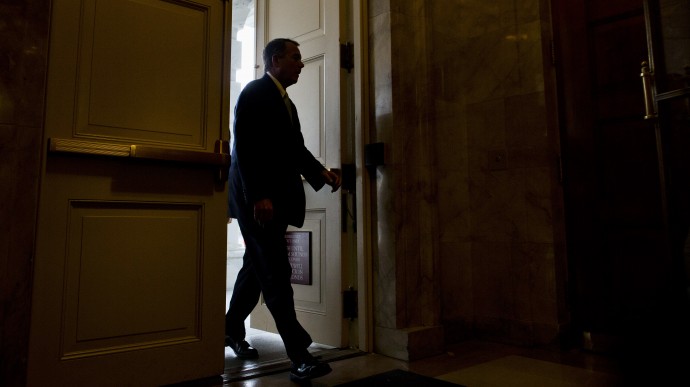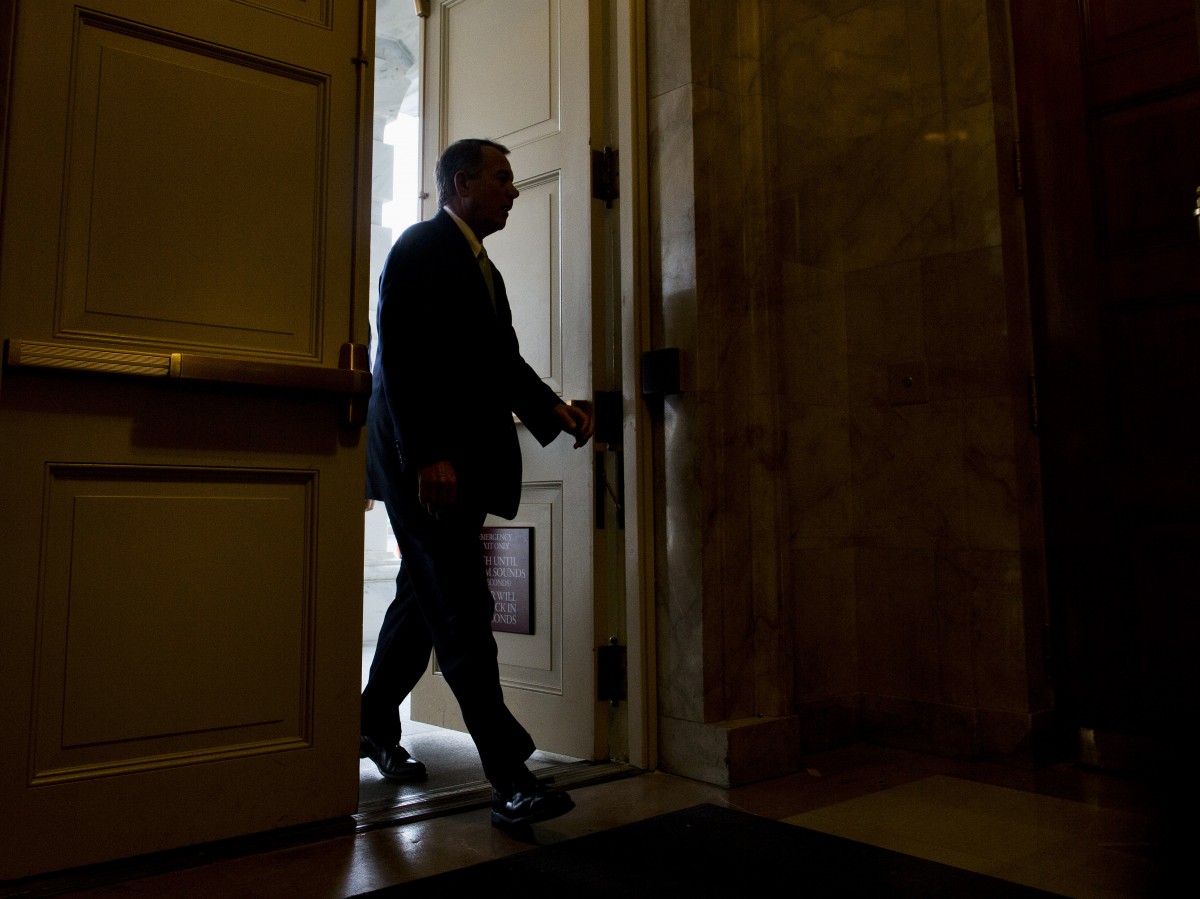
The ongoing federal government shutdown is framing a fundamental discussion on the relationships between the branches of the government — the implications of which may significantly change the way the federal government operates in the future.
“The Judiciary will remain open for business through October 17, 2013,” read a posting on the United States Courts website. “When no funding mechanism was in place on October 1, 2013, the Judiciary projected that fee income and no-year appropriated funds would enable court operations to continue for ten business days. The Judiciary has severely restricted spending during that period so that limited additional funding now exists. Spending rates and fund balances will continue to be monitored closely in hope that adequate funds may be available to allow courts to operate through the end of the work week – October 18.”
“Criminal litigation will continue without interruption as an activity essential to the safety of human life and the protection of property,” an Oct. 11 U.S. Department of Justice memo read. “Civil litigation will be curtailed or postponed to the extent that this can be done without compromising to a significant degree the safety of human life or the protection of property.”
This represents a constitutional crisis unlike any other the nation has ever faced. Simply put, one branch of government — the Congress, in this case — is, by means of denying funding, preventing another branch — the judiciary — from operating. In doing so, the entire underpinning of the government — the constitutional distribution of power — could become undone should the courts lose the financial capability to operate.
“The Constitution tells us what we have to do and we can’t control our workload. It walks in the door, whether we’re funded or not funded,” said U.S. District Court Chief Judge Loretta Preska in New York. Preska has placed all civil cases except those already in trial on hold at the request of the U.S. Attorney. Preska said that the roughly 450 district court employees that serve the U.S. District Court for the Southern District of New York will work the criminal caseload, even after the funding runs out. Courts in San Francisco, Philadelphia and St. Louis have also indicated that their employees will work even without funding to pay them.
Empty coffers
Despite this, the U.S. Attorney’s Office is increasingly running short on resources to effectively work its indictment list, including a lack of experts from other federal agencies — such as the Fish and Wildlife Services, Customs & Border Patrol and the Drug Enforcement Agency. This is creating a situation in which the U.S. Attorneys and the Justice Department are increasingly requesting stays; some are approved, creating a backlog. Some are not, forcing the Justice Department to argue the cases unprepared.
In Los Angeles, for example, 51 federal prosecutors and almost 50 civil case workers have been furloughed. In Montana, more than a dozen cases have requested stays, with more than half of the local U.S. Attorney’s staff furloughed. Immigration court proceedings have been shut down for the most part. The U.S. Marshals are working without pay and juror reimbursement funds are expected to run out soon, potentially causing the government to draft IOUs for jury duty payment.
The shutdown is being perceived as another slight against a judiciary that is being forced to deal with an ever-shrinking appropriations budget due to sequestration. A growing number of justices feel that the cuts have been too deep already and are threatening the courts’ ability to effectively interpret the law.
“While the vast majority of litigants who now must endure a delay in the progress of their matters do so due to circumstances beyond their control, that cannot be said of the House of Representatives, which has played a role in the shutdown that prompted the stay motion,” wrote Amy Berman Jackson, a judge hearing a case requesting Operation Fast and Furious records from the Justice Department, in response to a request from House lawyers to keep open the case.
Richard Kopf, a federal judge for the U.S. District Court for the District of Nebraska, wrote in his blog that the chief judges of the circuit and the district judges should rule the clerks of the court, the federal public defenders and all of the unit executives of the court as essential employees under the Anti-Deficiency Act.
“Given the loss of employees already suffered by the judiciary on account of the sequester and otherwise, why shouldn’t every remaining employee of every federal district court (including [federal public defenders]) be declared ‘essential?’” the judge asked. “Such an order would set up an inter-branch dispute worth having … [Congress] could do nothing, in which event Congress loses its ability to destroy the judiciary [by] failing to pass a budget. Or, Congress could go batshit and the judiciary and Congress could have it out.”
“It is time to tell Congress to go to hell. It’s the right thing to do,” Kopf concluded.
The politics of court funding
Sen. Chris Coons (D-Del.), chairman of the Senate Subcommittee on Bankruptcy and the Courts, has indicated that due to the fact that the shutdown had made learning about how it will affect the courts difficult, he would not object to the courts following Kopf’s plan. “That’s a judgment I wouldn’t quibble with at this point, because at my oversight hearing I was struck at just how little they have in the way of discretionary spending left,” Coons said. “I can say having the federal court system under funded or shut down is a sign blow to justice and our economy.”
This sentimentality is not shared throughout the Senate, though. Sen. Chuck Grassley (R-Iowa) said that the judiciary would “need to make tough choices like the rest of the federal government on whether to furlough employees.”
The Anti-Deficiency Act “gives wide discretion on what’s needed to carry out essential functions,” Grassley said in a written statement, “but I assume they’ll be consulting with their legal teams to ensure the court system is in compliance with the law, while meeting its core mission.”
“Congress voted and [the] American people seem quite comfortable with the idea that we can reduce spending for a little while around here instead of having steady growth and they’re not panicked, and I know we have stories that there’s not enough copy paper in a clerk’s office somewhere,” said Sen. Jeff Sessions (R-Ala.) in July. “Well, I would say … you need a new clerk. It’s like those school people that would require the students to bring in toilet paper because they can’t find enough money to do that, or fix their roof. That’s a mismanagement to me.”
This represents the core argument in funding the judiciary. In 42 states, the judiciary budget has been cut, despite an increase in caseload. For example, the $170 million cut to the New York state courts has nearly brought the system to its knees. The cuts have been interpreted as massive staff cuts, a reduction of a half-hour per day in the court schedule and a disallowance of overtime allowances, which has created a monstrous backlog in which it may take weeks or even months to discharge a case. “You will start a hearing and continue it weeks later,” said Stewart Aaron, the president of NYCLA. “There are these long delays in getting resolutions with matters that are important to the litigants, leaving people and issues in complete limbo. Obviously that’s not the way to administer justice.”
“Families are really in crisis by the time they go to the court system, and most people have an expectation that it’s going to be dealt with expeditiously,” said Briana Denney, a matrimonial and family law attorney. “The cutbacks have really impacted how much time judges have to deal with people. Unless it’s the worst of the worst, like serious abuse or things like that, things are getting pushed out for months or even years.”
No voice in the crowd
Fundamentally, unlike the executive branch, the judiciary has no advocate. It has no secretary to argue for it before Congress; nor do the courts have access to the public to push for popular support. As the judiciary is a responsive agency — dealing with the cases assigned to it with little internal capacity to change its workflow — it cannot easily adjust to changes in funding with personnel shifts or changes to programming, as other federal entities can.
“We don’t exert the kind of control to keep up resources to match the need,” said Richard Roberts, the chief judge of the U.S. District Court for the District of Columbia. “We don’t have ultimately any authority to set appropriations Congress decides on. We do not necessarily get to decide what the White House sends to [the Office of Management and Budget] and to Congress. We can’t go out and stir up constituents to do talking for us. Structurally, there’s a bit of an imbalance.”
A common mentality in the Republican Party that the court is being controlled by “advocate judges” has not helped in convincing the party to preserve judicial budgets. While it is unfair to say that this is the primary reason why the judiciary is often an afterthought in budget negotiations, it helps to explain — in part, along with the fact that the court is typically not engaged in public political discussions — why court budget cuts tend to be underreported. Yet their effects are clear to see. The courts are increasingly being challenged to find ways to keep their doors open without impairing access to justice and endangering the public safety at a whole.
In a March sequestration hearing, U.S. Supreme Court Justices Stephen Breyer and Anthony Kennedy spoke to the House Appropriations subcommittee on addressing the sequestration levels facing the Judiciary. “Please consider the 0.2 percent of the federal budget for the entire third branch of the federal government is more than reasonable. What’s at stake here is the efficiency of the courts, and they are … not only part of the constitutional structure, they are part of the economic structure of the country,” Kennedy said.
“If it’s for any long term, it will be inconsistent with the constitutional obligation of the Congress to fund the courts,” Kennedy continued. “We don’t control our workload. Cases come to us, we don’t go looking for cases.”
The court considers some 9,000 petitions for certiorari in a year, Kennedy said. “We can’t say arbitrarily, we’re only going to consider 6,000 and let the others go by the wayside.”
Sequestration cut $350 million of the federal judiciary budget last year, bringing current funding levels to $6.6 billion.


